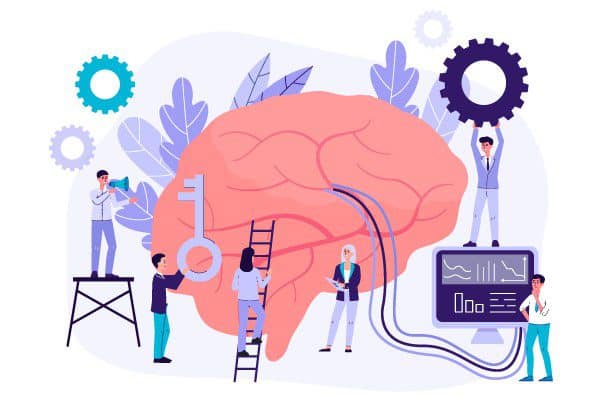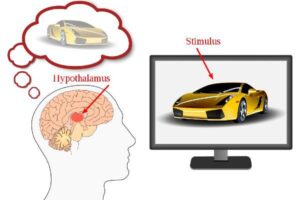In this age of hyper-solicited advertising, brands no longer know how to capture consumers' attention. On average, consumers see 1,200 advertisements a day! How can a brand stand out from the crowd? By practising neuromarketing. In other words, by applying cognitive neuroscience to marketing. A vector of emotions, neuromarketing acts unconsciously on the brain to trigger the act of buying. What exactly is this concept? How useful is it? Find out how neuroscience can help marketers improve their campaigns, by following these 4 steps.

The application of neuroscience to marketing and communication is not new. It began to attract interest in the 2000s, with the work of American neuroscientist Professor Read Montague. The experiment involved tasting Pepsi and Coca-Cola. The result: while 67 % of individuals said they preferred Pepsi in the blind test, 75 % chose Coca-Cola when they tasted the drink with knowledge of the brand! This research has shown that consumers do not choose products rationally, and that they are strongly influenced by brand image. Hence the need for companies to invest in neuromarketing to refine their commercial strategies.
Understanding the "unconscious" of consumers
The aim: to offer the most relevant products possible within a market. This involves studying the purchasing decisions of consumers ˗ less rational than they think, as we have seen. In other words, emotions play an important role decisive factor in the purchasing process. Hence the need to go beyond the measurements made by traditional research methods.
These methods are generally limited to questioning the consumer. Declarative information is often subjective and biased. Consumer decision-making, memorisation and preference are generally the result of unconscious or inexpressible processes that cannot be expressed in questionnaires. For example, focus groups do not identify these emotional manifestations.
By applying neuroscience to marketing, you refine the information obtained by traditional marketing. And you gain a deeper understanding of your customers' behaviour.
Neuromarketing: using dedicated tools

Benoit Rochon
Neuromarketing involves analysing the reactions of the human brain to different types of visual stimuli when making a purchase. Various tools are used to decipher the emotions and behaviour of consumers. At the top of the list are magnetic resonance imaging (MRI) techniques. These enable us to observe the brain activity of consumers when they are subjected to different stimuli. These techniques can be used to analyse the reactions triggered by an advertisement in order to find ways of making it more attractive.
Another technique used is eye-tracking, to better understand the subject's attention span. In practical terms, this involves measuring the movement of a consumer's eyes. This makes it possible to analyse the paths travelled by the eye on a specific medium (website, packaging, advertising campaign, etc.) and to determine the areas that are looked at the most: number of glances, time, reading direction, order of eye movement, etc. Netflix, for example, uses eye-tracking to optimise navigation on its application.
EEG (electroencephalography) is a third tool that is highly prized, particularly by major groups such as L'Oréal. Using electrodes attached to the scalp, this tool measures the electrical waves generated by the brain. The aim is to see in real time how the brain reacts emotionally to a given experience (watching an advert or browsing an e-commerce site, for example).
Also read: After the IoT, the IoB? We tell you all about the Internet of Behavior
Predicting consumer behaviour
Thanks to these different tools, you can obtain precise data to help you better understand what your target audience is looking for, understand them better and, as a result, improve their experience. All this information will help you to influence their behaviour and decision-making. By giving them the right recommendations for an advertising campaign, for example. Or adapting the ergonomics of an e-commerce site to their preferences.
In the end, you increase your chances of capturing the attention of your target audience. What's more, by being more precise in what you do, you can optimise your actions (campaigns, content creation, etc.) and become more effective. At the same time as rationalising your investments. Neuromarketing can be applied in both the physical and digital worlds.
Know reason and keep
Thanks to neuromarketing, you can target the cerebral levers of the desire to buy. But that doesn't mean that your "commercial" objective will be achieved. In other words, it's not necessarily the best-remembered ad that's the most effective. There are, of course, other parameters that come into play, such as the environment when consumers buy.
In addition, neuromarketing directly addresses the subconscious of consumers for commercial purposes. This raises the question of consent and the right to privacy. Hence the introduction of safeguards by certain countries, such as Chile, which is considering the creation of "neuro-rights". These would be designed to protect citizens against the possible intrusion of unwanted information and solicitations into their brains.
The important thing to remember is that the application of neuroscience to marketing provides a more detailed and predictive understanding of customer behaviour. And this goes beyond the scope of traditional marketing. Neuromarketing helps marketers to improve their campaigns through the use of dedicated tools such as MRI and eye-tracking. The result: optimised actions for greater effectiveness. But don't be fooled, because neuromarketing doesn't always work.


